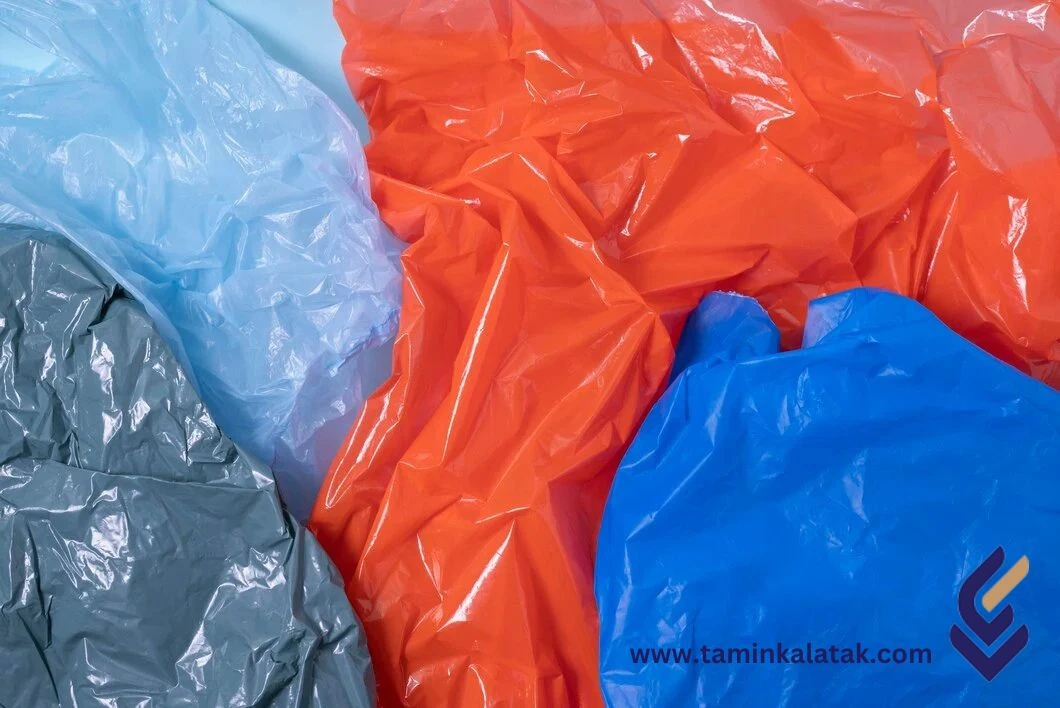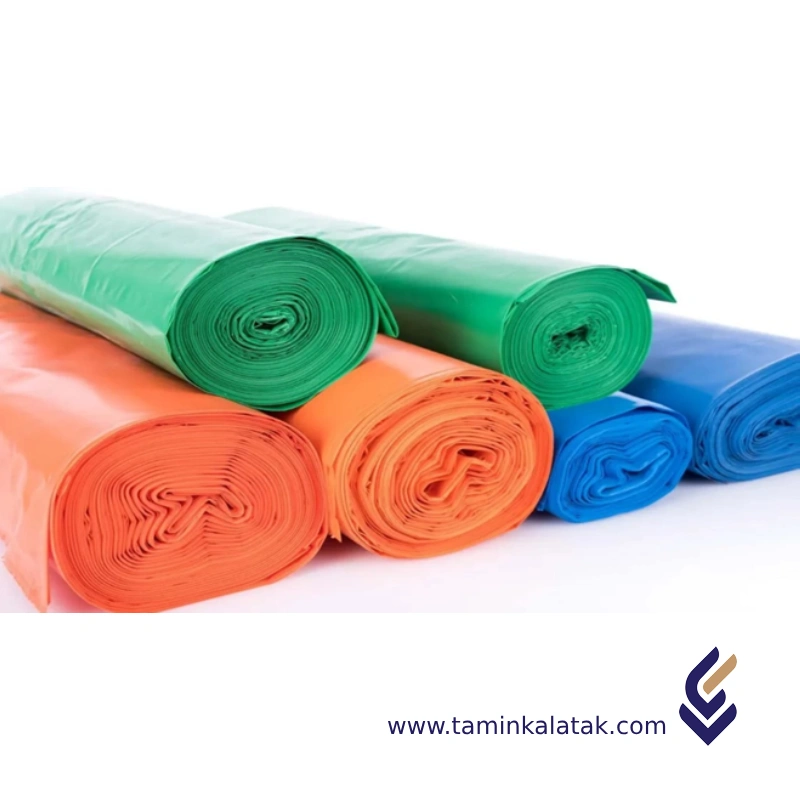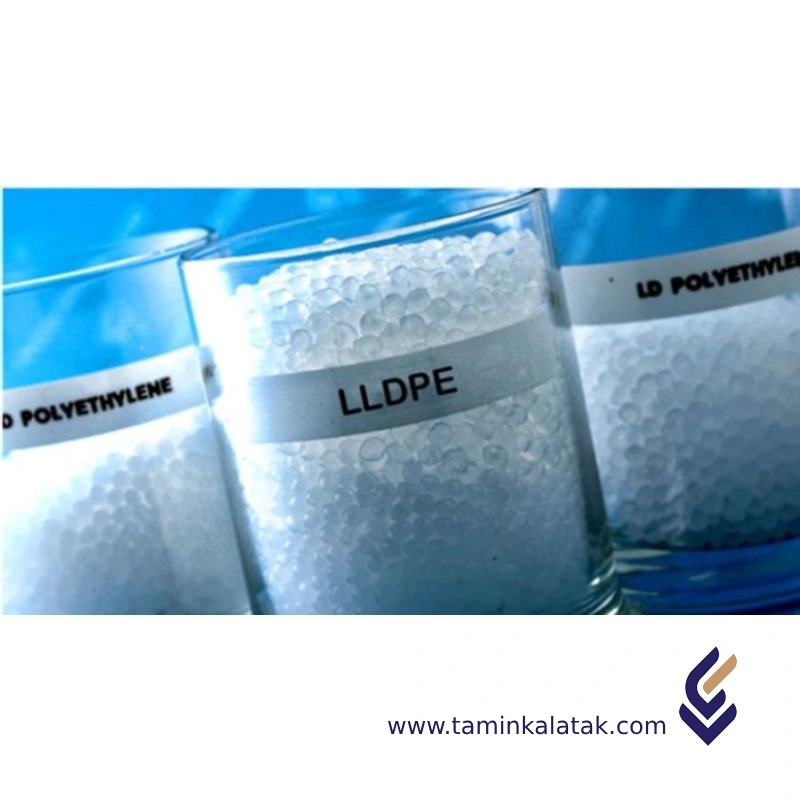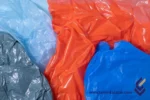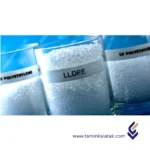Polymers are made up of very large molecules made up of many repeating units called monomers, which ultimately form this long polymer chain
Linear Low Density Polyethylene (LLDPE)
LLDPE stands for Linear Low-Density Polyethylene. It is a type of polyethylene (a polymer made from ethylene monomers) that has short, linear branches in its molecular structure. This structure gives LLDPE unique properties compared to LDPE (Low-Density Polyethylene) and HDPE (High-Density Polyethylene).
Structure
LLDPE has a unique linear molecular structure with short, controlled branches. This structure is different from LDPE (Low-Density Polyethylene), which has long and irregular branches. LLDPE consists of ethylene monomers (–CH₂–CH₂–) linked in a linear fashion. It has short, uniform side branches created by copolymerizing ethylene with α-olefins (like butene, hexene, or octene).These branches prevent the polymer chains from packing too tightly, giving LLDPE low density and flexibility.
Properties
LLDPE (Linear Low-Density Polyethylene) is a versatile thermoplastic polymer known for its excellent flexibility, high impact resistance, and good tensile strength. it is slightly denser than LDPE but less rigid than HDPE, making it ideal for applications requiring toughness and stretchability. It has a high elongation at break (>500%), allowing it to withstand significant stretching without tearing. LLDPE exhibits excellent chemical resistance against acids, bases, and alcohols while maintaining low water absorption, making it suitable for moisture-sensitive applications. Thermally, it has a melting point of approximately 110–125°C and remains functional between -50°C and 60°C. Though it lacks inherent UV resistance, stabilizers can be added to improve durability under sunlight. Its ease of processing through extrusion, blow molding, and film manufacturing makes it widely used in plastic films, flexible tubing, cable insulation, and various molded products. While lldpe is non-biodegradable, it is recyclable, contributing to sustainable material management.
Applications of Linear Low-Density Polyethylene (LLDPE)
- Packaging Industry:
- Stretch films and shrink wraps
- Plastic bags (grocery, trash, and industrial)
- Food packaging films (cling wraps, pouches)
- Agricultural Sector:
- Greenhouse films and mulch films
- Drip irrigation tubing and water storage tanks
- Industrial Applications:
- Pipes and fittings (flexible and durable)
- Cable insulation and protective coatings
- Industrial liners (chemical and water-resistant)
- Automotive Industry:
- Fuel tanks and hoses
- Interior soft components and protective covers
- Consumer & Household Products:
- Toys, containers, and household items
- Soft-touch grips and molded parts
- Medical & Pharmaceutical:
- Medical tubing and IV bags
- Sterile packaging films
Advantages of LLDPE
- Higher Flexibility and Toughness:
- More impact-resistant than LDPE
- Maintains durability even at low temperatures
- Excellent Chemical and Moisture Resistance:
- Resistant to acids, bases, and solvents
- Waterproof and corrosion-resistant
- Good Processability
- Lightweight and Cost-Effective
- Better Puncture and Tear Resistance:
- Ideal for thin film applications like stretch wraps
Disadvantages of LLDPE
- Lower Heat Resistance:
- Softens and deforms at high temperatures
- Not suitable for high-temperature applications
- Poor UV Stability:
- Requires UV stabilizers for outdoor use, or it degrades over time
- Lower Stiffness Compared to HDPE:
- Less rigid, making it unsuitable for structural applications
- Limited Gas Barrier Properties:
- Not ideal for gas-tight packaging applications
- Difficult to Process in Some Applications:
- Requires higher processing temperatures compared to LDPE
Applications
| Applications | , , , , , , , , , , |
|---|
LLDPE
| prodact | Grade | MFI(190 °C /2.16 Kg ) | Density (g/Cm3) | Process Metod | Application / Description | Description | Brochure | MSDS |
|---|---|---|---|---|---|---|---|---|
| LLDPE | 22 B01 | 2 g/10 min | 0.918 | Blown Film Extrusion / Cast Film Extrusion (limited) | Flexible Packaging Films / Stretch and Shrink Films / Agricultural Films / General-Purpose Bags / Liners | |||
| LLDPE | 22 B02 | 2 g/10 min | 0.918 | Cast Film Extrusion (limited) / Blown Film Extrusion | Flexible Packaging / Stretch and Shrink Films / Agricultural Films / General-Purpose Bags / Industrial Liners | |||
| LLDPE | 22 B03 | 2 g/10 min | 0.918–0.920 | Blown Film Extrusion / Cast Film Extrusion (optional) | Flexible Packaging Films / Agricultural Films / Stretch and Shrink Films / General-Purpose Bags / Industrial Liners | |||
| LLDPE | 0209 AA | 0.9 g/10 min | 0.92 | Blown Film Extrusion / Cast Film Extrusion (optional) | Flexible Packaging Films / Agricultural Films / Stretch and Shrink Films / Liners and Bags / Industrial Films | |||
| LLDPE | 18 B01 | 1 g/10 min | 0.918 | Blown Film Extrusion / Cast Film Extrusion (limited) | Flexible Packaging / Agricultural Films / Stretch and Shrink Films / Trash Bags and Liners / General-Purpose Films | |||
| LLDPE | 22501 KJ | 1 g/10 min | 0.925 | Blown Film Extrusion / Cast Film Extrusion / | Heavy-Duty Packaging / Agricultural Films / Stretch and Shrink Films / Trash Bags and Liners / General-Purpose Films | |||
| LLDPE | LL-235F6 | 1 g/10 min | 0.935 | Blown Film Extrusion / Cast Film Extrusion (optional) | Heavy-Duty Packaging / Agricultural Films / Trash Bags and Liners / Flexible Packaging: / General-Purpose Films | LL-235F6 is a linear-low density polyethylene resin (LLDPE), obtained by gas phase technology process. This grade designed for the production of different type of films and agricultural tapes. In this grade excellent processability, mechanical properties, melt strength and drawability achieved based on the balanced molecular weight and molecular weight distribution. LL-235F6 has good sealability and approved for food contact applications | ||
| LLDPE | LL0209AA | 0.9 g/10 min | 0.92 | Blown Film Extrusion / Cast Film Extrusion (optional) | Flexible Packaging Films / Agricultural Films / Stretch and Shrink Films / Trash Bags and Liners / General-Purpose Films | LL0209AA & LL0209KJ are linear low density polyethylene copolymers containing butene-1 as a co-monomer. LL0209AA & LL0209KJ are suitable for general purpose films, neat or in lean blends with LDPE and other ethylene polymers |

